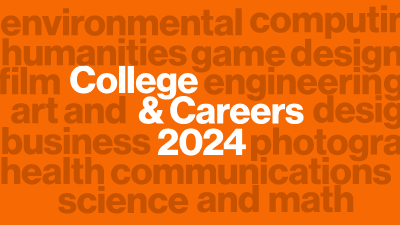Color Science MS - Curriculum
Color Science MS
Color Science, MS degree, typical course sequence
| Course | Sem. Cr. Hrs. | |
|---|---|---|
| First Year | ||
| CLRS-601 | Principles of Color Science This course covers the principles of color science including theory, application, and hands-on experience incorporated into the lectures. Topics include color appearance (hue, lightness, brightness, chroma, saturation, colorfulness), colorimetry (spectral, XYZ, xyY, L*a*b*, L*C*abhab, ΔE*ab, ΔE00), the use of linear algebra in color science and color imaging, metamerism, chromatic adaptation, color inconstancy, color rendering, color appearance models (CIECAM02), and image appearance models (S-CIELAB, iCAM). (Prerequisites: Graduate standing in CLRS-MS, IMGS-MS, CLRS-PHD or IMGS-PHD.) Lecture 3 (Fall). |
3 |
| CLRS-602 | Color Physics and Applications This course explores the relationship between a material’s color and its constituent raw materials such as colorants, binding media, substrates, and overcoats. These can be determined using a variety of physical models based on absorption, scattering, luminescence, and interference phenomena. These models enable the production of paints, plastics, colored paper, printing, and others to have specific colors. Accompanying laboratories will implement and optimize these models using filters, artist opaque and translucent paints and varnishes including metallic and pearlescent colorants, and inkjet printing. Statistical techniques include principal component analysis and linear and nonlinear optimization. (Prerequisites: CLRS-601 or equivalent course.) Lecture 3 (Spring). |
3 |
| CLRS-720 | Computational Vision Science Computational Vision Science This course provides an introduction to modern computer-based methods for the measurement and modeling of human vision. Lectures will introduce the experimental techniques of visual psychophysics including threshold measurement, psychometric functions, signal detection theory, and indirect, direct, and multidimensional scaling. Lectures will also introduce the MATLAB technical computing environment and will teach how to use MATLAB to run computer-based psychophysical experiments and to analyze experimental data and visualize results. Laboratory exercises will provide practical experience in using computer-based tools to conduct psychophysical experiments and to develop computational models of the results. Prior experience in vision science and/or scientific computing will be helpful but is not required. (Prerequisites: Graduate standing in CLRS-MS, IMGS-MS, CLRS-PHD or IMGS-PHD.) Lecture 3 (Fall). |
3 |
| CLRS-750 | Historical Research Perspectives Historical Research Perspectives is a weekly forum in which students will learn about historical and classic topics in color science. The course focuses on journal club discussions of papers selected by the students and faculty. It also includes oral presentations from students, laboratory staff, and faculty as well as visiting speakers from within and external to RIT. Students will prepare their own oral presentations and written assignments based on the course readings and independent research. Students will develop professional skills required for formal scientific presentations and writing. (Prerequisites: Graduate standing in CLRS-MS or CLRS-PHD.) Seminar 1 (Fall). |
1 |
| CLRS-751 | Research and Publication Methods Color Science Seminar II is a weekly forum in which students will learn about current research topics in color science. The course focuses on journal club discussions of papers selected by the students and faculty. It also includes oral presentations from students, laboratory staff, and faculty as well as visiting speakers from within and external to RIT. Students will prepare their own oral presentations and written assignments based on the course readings and independent research. Students will further develop professional skills required for formal scientific presentations and writing. A draft thesis or dissertation proposal will also be prepared. (Prerequisites: CLRS-750 or equivalent course.) Seminar 2 (Spring). |
2 |
| CLRS-820 | Modeling Visual Perception This course presents the transition from the measurement of color matches and differences to the description and measurement of color appearance in complex visual stimuli. This seminar course is based mainly on review and student-led discussion of primary references. Topics include: appearance terminology, appearance phenomena, viewing conditions, chromatic adaptation, color appearance modeling, image appearance, image quality, and material appearance. (Prerequisites: CRLS-601 and CLRS-720 or equivalent courses.) Lecture 3 (Spring). |
3 |
Graduate Electives |
6 | |
| Second Year | ||
| CLRS-890 | Research & Thesis Masters-level research by the candidate on an appropriate topic as arranged between the candidate and the research advisor. (Enrollment in this course requires permission from the department offering the course.) Thesis (Fall, Spring, Summer). |
6 |
Elective |
3 | |
| Total Semester Credit Hours | 30 |
|









